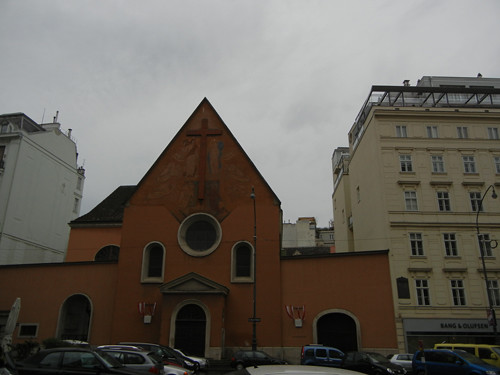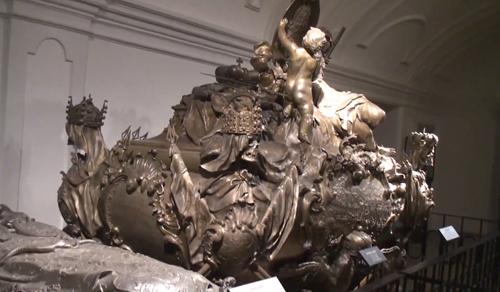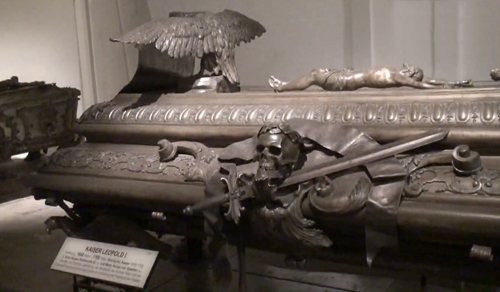
Kapuzinerkirche und Kaisergruft, Wien
The Imperial Crypt (Kapuzinergruft) of the Capuchin Church in Vienna is the burial crypt for the ruling Habsburg family. Wikipedia states that "the bodies of 145 Habsburg royalty, plus urns containing the hearts or cremated remains of four others, are deposited here, including 12 emperors and 18 empresses. The most recent entombment was in 2011. The visible 107 metal sarcophagi and 5 heart urns range in style from puritan plain to exuberant rococo."
My visit to the crypt was definitely an unforgettable experience. Seeing the resting places of so many well-known historical figures, in their glorious or pitiful sarcophagi was alternately disturbing or moving. Many of those sarcophagi could also be considered as pieces of art, and the best of them were the humble and/or piteous ones, often with predominant figures or symbols of death and decay.
The most iconic one was that for Kaiser Kaiser Karl VI. (1685-1740). His large metal sarcophagus was a testament of his own greatness and humility. The three-dimensional sculpture had a monumental upwards sweep, yet it was contained at the four corners by the crowned skulls - the crowns he had carried proudly on his head before his death. The skull with the Holy Roman Empire was often the symbol of this royal crypt, staring at viewers with unrelenting intensity. The startling contrast between the worldly wealth and glory, and the inglorious, creepy and bleached skull invoked many emotions, even amongst indifferent viewers.


Source: de.wikipedia.org, Welleschik
Kaiser Karl VI. (Charles VI.) (1685-1740)
The other favorite of mine was the sarcophagus of another Holy Roman Emperor, Kaiser Leopold I (1640-1705), which was much plainer comparing to the one for Karl VI. Instead of sweeping gesture towards heaven, the rather flat lid had was humbly adorned, with a quietly enduring crucified Jesus at its center. It also had skull on the side, but it wore no crown. It its place, the laurel wreath of Caesar. Perhaps this was even more glorious than earthly gold? This one moved me profoundly with its piety and its delicate and understated execution.

Kaiser Leopold I. (1640-1705)
My Favorite Museum Collection Series
>> My Favorite Museum Collection Series 41: My Favorite Paintings from Museum of Fine Arts (Budapest) (Szépművészeti Múzeum)
<< My Favorite Museum Collection Series 39: My Favorite Paintings at Kunsthistorisches Museum, Wien (Vienna)





No comments:
Post a Comment